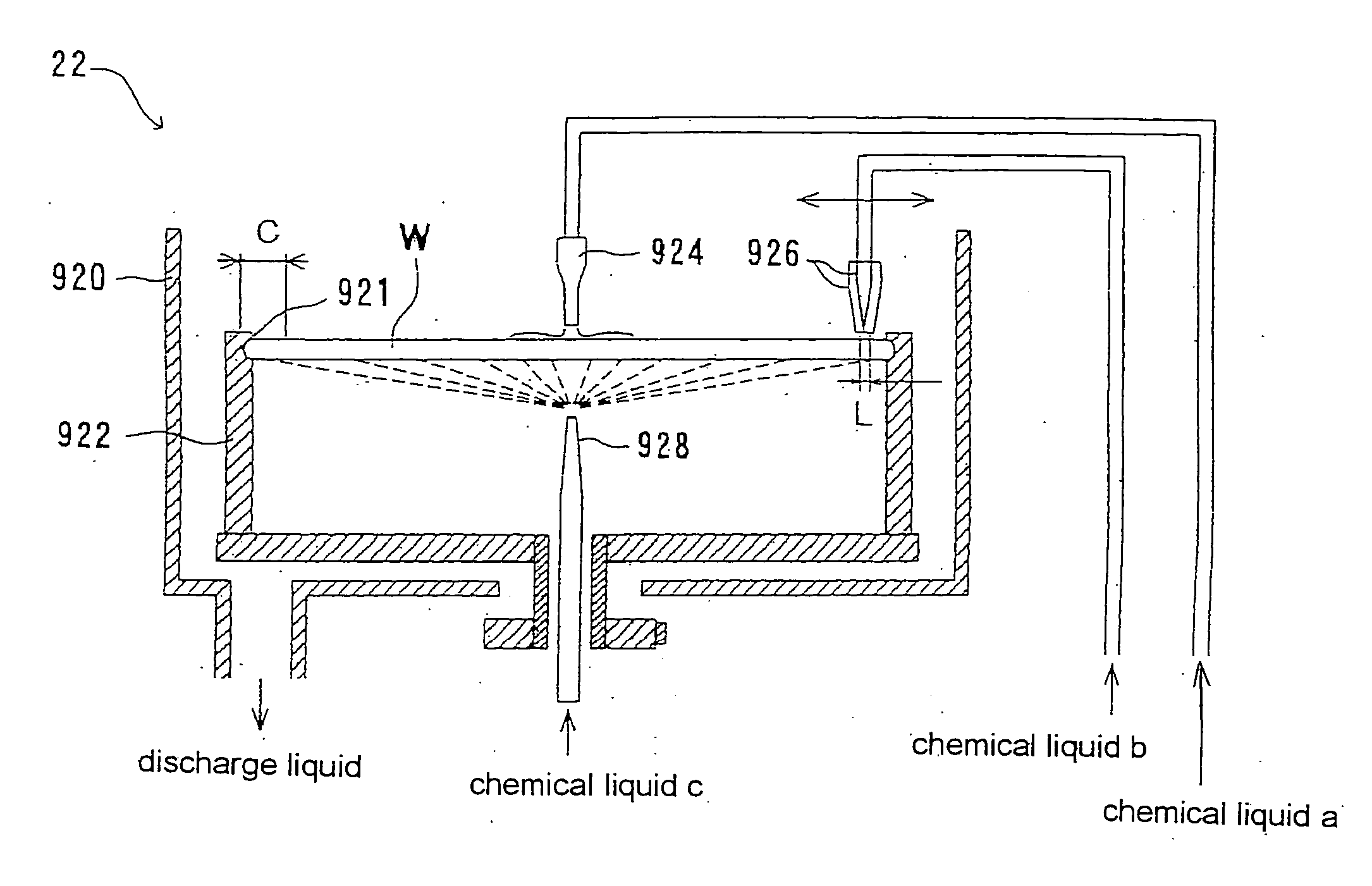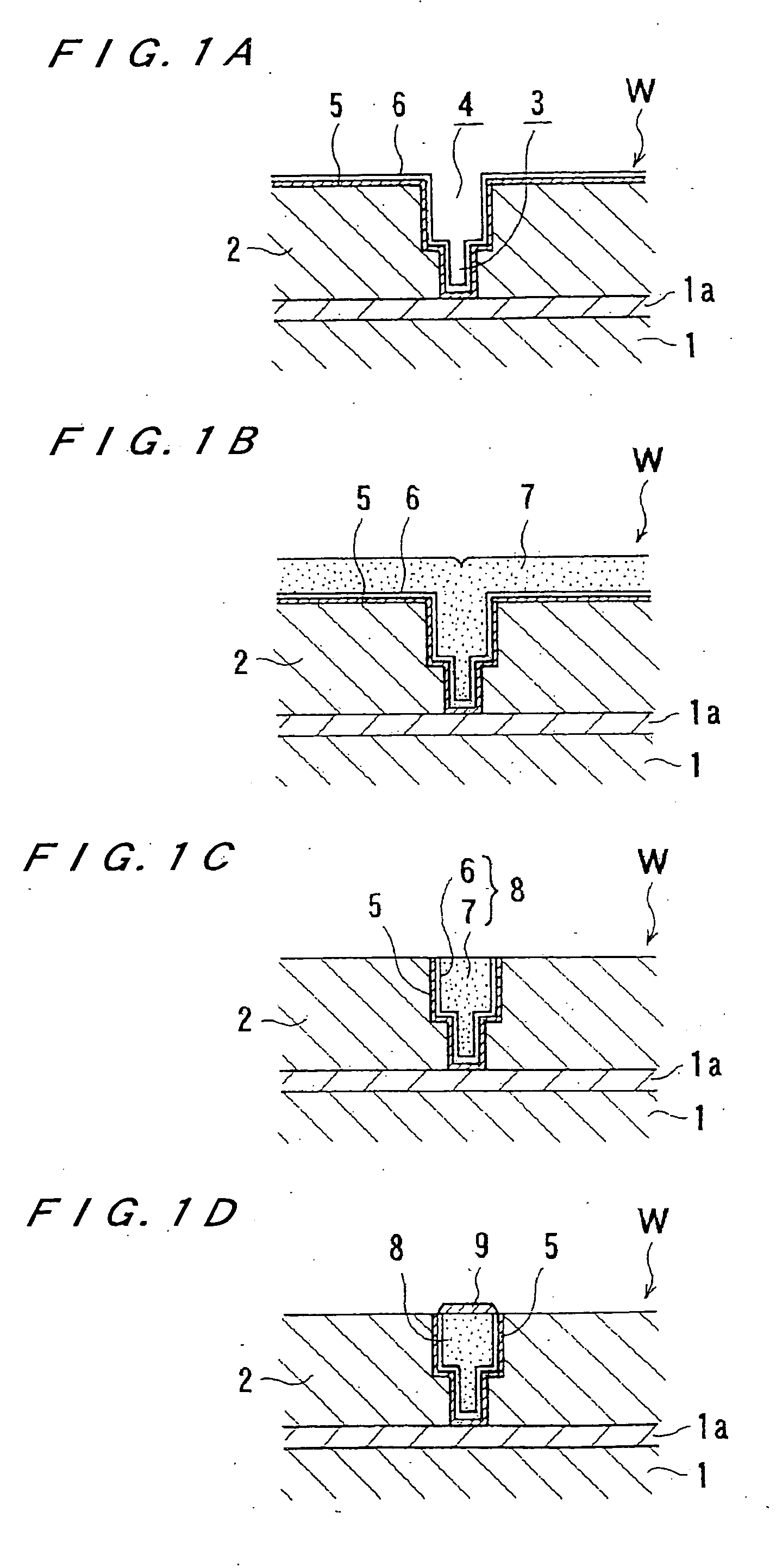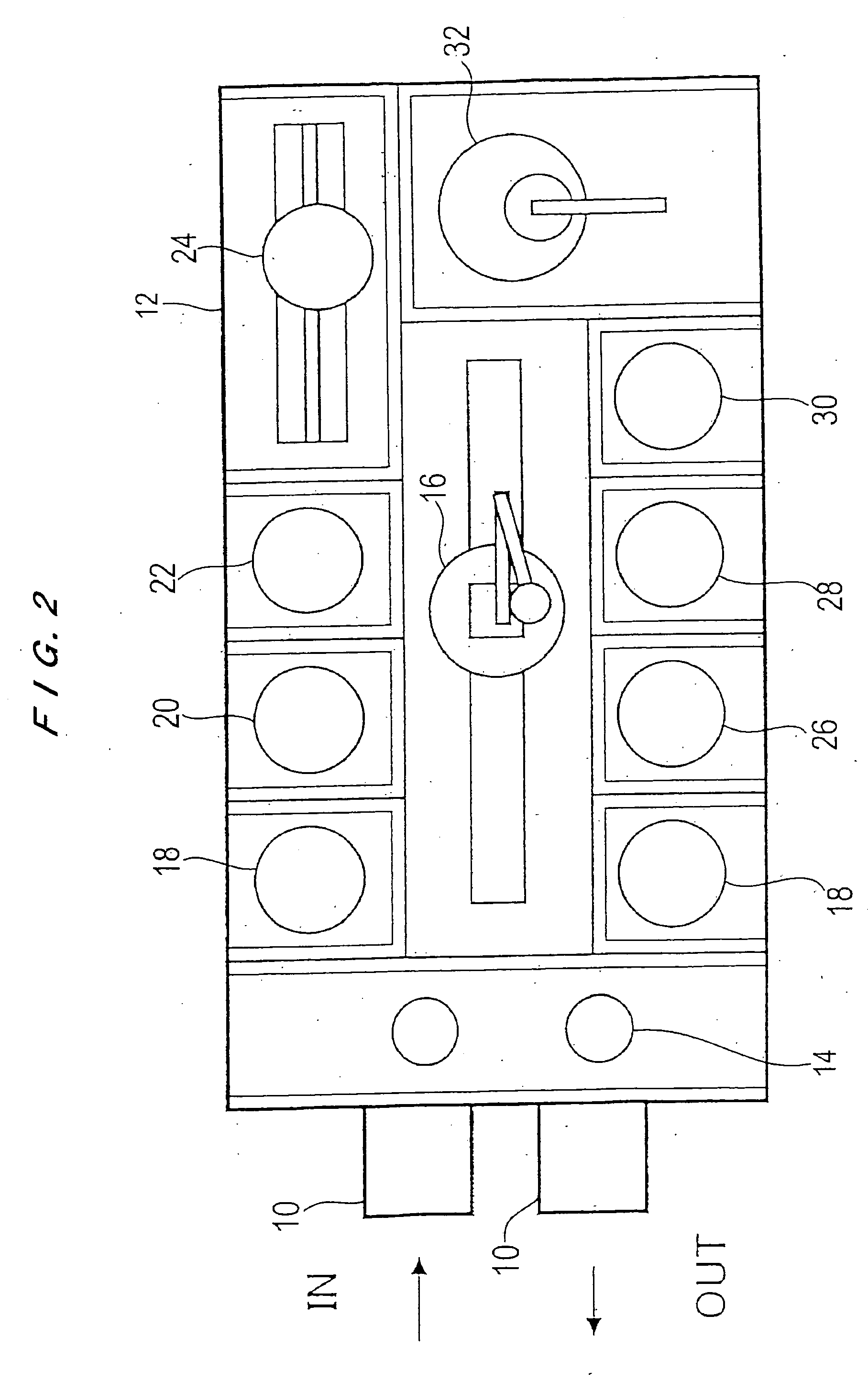Plating device and planting method
- Summary
- Abstract
- Description
- Claims
- Application Information
AI Technical Summary
Benefits of technology
Problems solved by technology
Method used
Image
Examples
example
[0288] A barrier metal process was performed on the substrate W having narrow trenches (having a depth of 1 μm and a width of 0.18 μm) 4a and wide trenches (having a width of 100 μm) 4b having a larger width than the narrow trenches by a conventional method. Next, the seed layer 6 having a thickness of 80 nm was formed on the substrate W by sputtering, and then the substrate W was used as a testing sample.
[0289] This testing sample was plated using an acid copper plating solution having composition shown in Table 1 by a plating apparatus having the electrode head (the anode 704 is composed of copper containing phosphorus having holes) 701 having the structure shown in FIG. 34. The plating condition is shown in FIG. 36. As a current-flowing pattern, first, in a state that the porous contact member 702 was brought out of contact with the seed layer 6, plating was started at a plating voltage of 1V, and after an elapse of ten seconds, current supply was stopped. Thereafter, the porous...
PUM
| Property | Measurement | Unit |
|---|---|---|
| Temperature | aaaaa | aaaaa |
| Thickness | aaaaa | aaaaa |
| Pressure | aaaaa | aaaaa |
Abstract
Description
Claims
Application Information
 Login to View More
Login to View More - R&D
- Intellectual Property
- Life Sciences
- Materials
- Tech Scout
- Unparalleled Data Quality
- Higher Quality Content
- 60% Fewer Hallucinations
Browse by: Latest US Patents, China's latest patents, Technical Efficacy Thesaurus, Application Domain, Technology Topic, Popular Technical Reports.
© 2025 PatSnap. All rights reserved.Legal|Privacy policy|Modern Slavery Act Transparency Statement|Sitemap|About US| Contact US: help@patsnap.com



